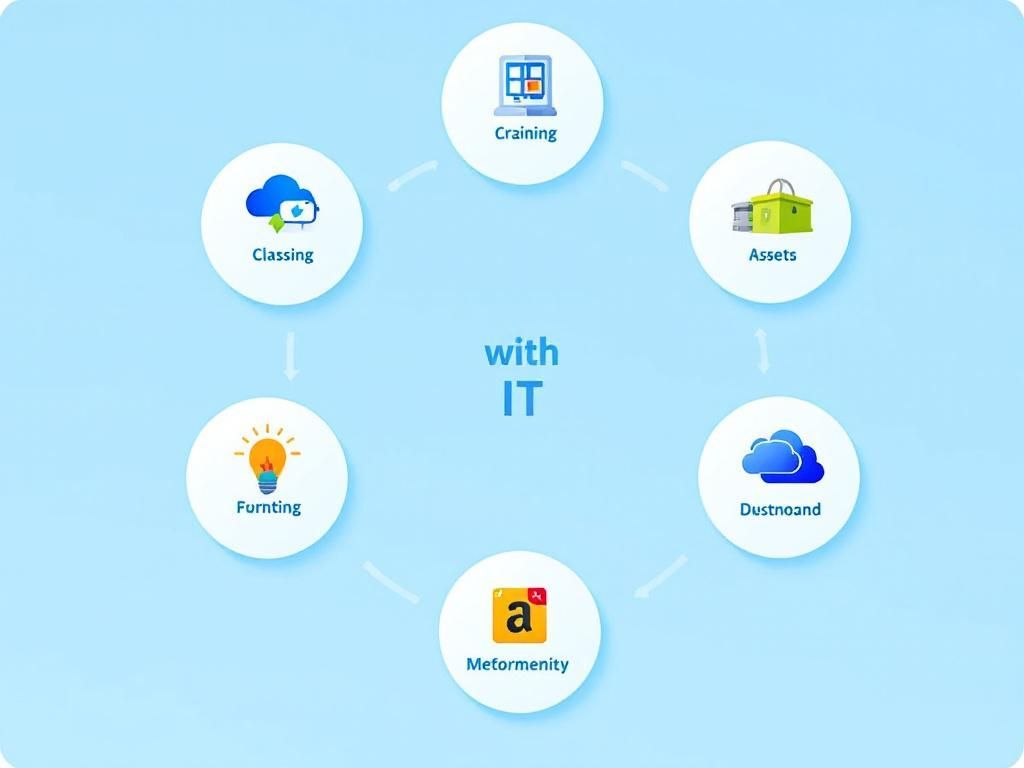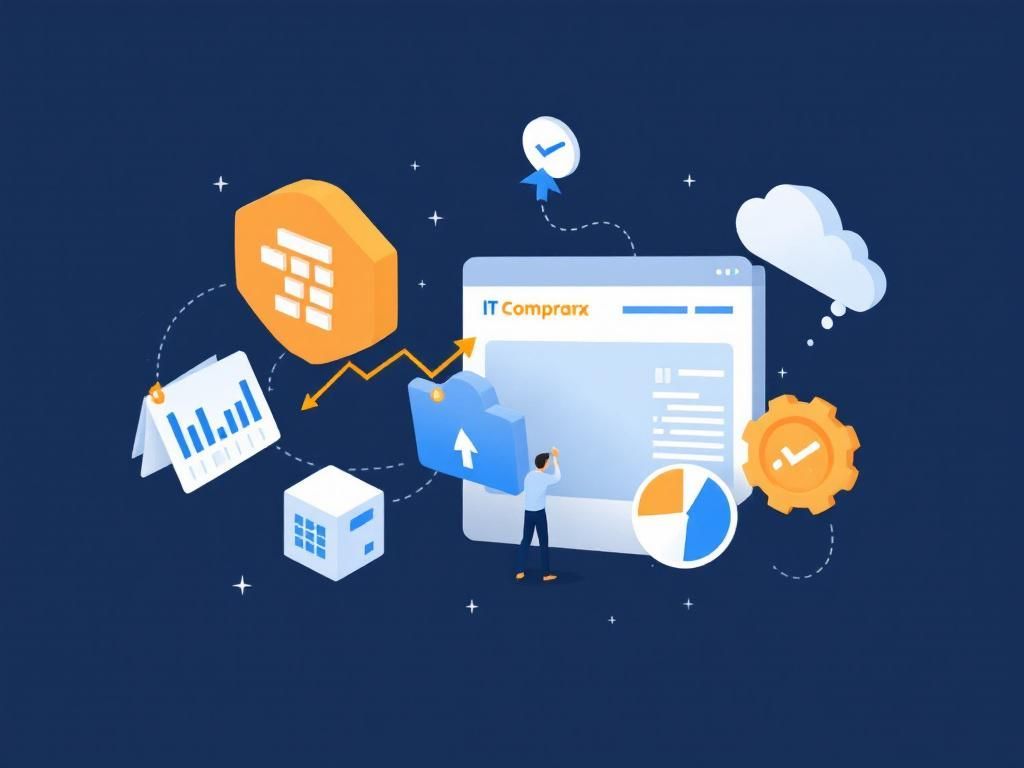Unlocking Efficiency in IT Asset Lifecycles
Discover strategies to enhance efficiency throughout the IT asset lifecycle, maximizing value and minimizing waste in your organization.

In today’s rapidly evolving technological landscape, effective management of IT assets is critical for organizations aiming to maintain a competitive edge. The entire lifecycle of IT assets, from acquisition to disposal, represents a significant opportunity for efficiency and cost savings. By examining key strategies and best practices, organizations can streamline their IT asset management (ITAM) processes to enhance productivity and reduce waste.
Table of Contents
Understanding IT Asset Lifecycles
Every IT asset follows a defined lifecycle, which typically includes the following stages:
- Planning: Identifying needs and determining the type of assets required.
- Acquisition: Procuring hardware and software assets.
- Deployment: Installing and configuring assets for use.
- Maintenance: Ongoing support and management of assets.
- Retirement: Decommissioning and disposal of assets.
The Importance of Lifecycle Management
Efficient management throughout these stages ensures that organizations maximize asset utilization and minimize unnecessary expenses. Key benefits include:
- Cost Savings: Reduces unnecessary purchases and optimizes existing resources.
- Compliance: Ensures adherence to regulations and licenses.
- Security: Protects sensitive data through proper asset disposal procedures.
- Environmental Responsibility: Promotes sustainable practices by managing e-waste.
Strategies for Optimizing IT Asset Management
Implementing a comprehensive asset management strategy involves various practices that help streamline processes and enhance efficiency. Below are several strategies that IT departments can leverage:
1. Implement an ITAM Tool
Utilizing specialized IT asset management software can significantly enhance visibility and control over the entire asset lifecycle. Modern ITAM tools offer features such as:
- Real-time asset tracking and inventory management
- Automated compliance monitoring
- Analytics for performance optimization
2. Establish Clear Policies and Procedures
Documenting and enforcing policies ensures consistency in asset management practices. Key areas to cover include:
- Asset acquisition protocols
- Documentation requirements for deployment and maintenance
- Guidelines for retirement and disposal
3. Conduct Regular Audits
Routine audits help verify that asset records are accurate and up-to-date. Auditing should include:
| Audit Component | Frequency |
|---|---|
| Physical Asset Inventory | Quarterly |
| Software License Compliance | Bi-annual |
| Policy Review | Annual |
Leveraging Automation in Asset Management
Automation can significantly reduce the manual effort required in asset management, leading to improved efficiency and accuracy. Consider the following areas for automation:
Automated Asset Discovery
Tools that automatically scan networks for connected devices can save time and ensure that all assets are accounted for without manual intervention.
License Management Automation
Automating software license management helps maintain compliance and avoid potential fines. This can involve:
- Tracking license usage and expiration dates
- Sending renewal reminders
Enhancing Communication Across Teams
Effective collaboration between IT departments and other business units is crucial for successful IT asset management. Strategies for fostering communication include:
Cross-Departmental Meetings
Scheduling regular meetings between IT and other departments (e.g., finance, operations) can address asset needs and align goals.
Shared Documentation
Using shared platforms for documentation allows different teams to access and contribute to asset management information easily.
Preparing for Asset Disposal
Proper disposal of IT assets is as critical as their acquisition. Failure to dispose of assets responsibly can lead to data breaches and environmental harm. Best practices for asset disposal include:
Data Sanitization
Ensure data is thoroughly wiped from devices before disposal, which may involve:
- Data erasure software
- Physical destruction of storage media
Environmental Considerations
Follow local regulations regarding electronic waste, and consider working with certified e-waste recyclers to ensure proper handling of disposed assets.
Future Trends in IT Asset Management
As technology continues to evolve, so too will the strategies for managing IT assets. Emerging trends to watch for include:
- Artificial Intelligence: AI can automate decision-making processes in asset management.
- Cloud Asset Management: As more organizations move to the cloud, managing cloud-based assets will require new approaches.
- Enhanced Security Protocols: Increased focus on cybersecurity will shape asset management practices.
Conclusion
An effective IT asset management strategy is essential for organizations striving to optimize their operations, reduce costs, and maintain compliance. By implementing the strategies discussed, embracing automation, and fostering communication across teams, organizations can unlock significant efficiency gains throughout the IT asset lifecycle. As technology continues to advance, staying informed about emerging trends will ensure that organizations remain agile and competitive in the marketplace.
FAQ
What is an IT asset lifecycle?
An IT asset lifecycle refers to the stages that IT assets go through from acquisition to disposal, including planning, deployment, maintenance, and retirement.
How can I unlock efficiency in my IT asset management?
To unlock efficiency in IT asset management, consider implementing automated tracking systems, optimizing procurement processes, and regularly auditing assets to ensure alignment with business needs.
What are the benefits of effective IT asset lifecycle management?
Effective IT asset lifecycle management can lead to reduced costs, improved compliance, enhanced security, and better resource allocation within an organization.
How often should I review my IT asset inventory?
It’s recommended to review your IT asset inventory at least annually, but more frequent reviews can help identify inefficiencies and ensure optimal asset utilization.
What role does data analytics play in IT asset management?
Data analytics plays a crucial role in IT asset management by providing insights into asset performance, helping to predict future needs, and enabling informed decision-making.
What are the challenges of managing IT asset lifecycles?
Challenges in managing IT asset lifecycles include tracking assets across locations, ensuring compliance with regulations, managing vendor relationships, and handling the complexities of asset disposal.








